Everything you need to know about current awareness
- Chapter I: What is current awareness?
- Chapter II: What is the difference between aggregation and curation?
- Chapter III: What does current awareness let you do?
- Chapter IV: How do you "do" current awareness?
- Chapter V: Driving the success of your business
- Chapter VI: Harnessing the power of the crowd
- Chapter VII: Guaranteeing current awareness project success
- Chapter VIII: Making a business case for your project
- Chapter IX: How can current awareness save you money?
- Chapter X: How can current awareness raise your profile?
- Chapter XI: What's the entrepreneur's view?
- Chapter XII: Are there any current awareness case studies?
- Chapter XIII: Let's be sociable!
What is current awareness?
Over 30 years ago, academic commentators defined current awareness as “a system, and often a publication, for notifying current documents to users of libraries and information services”. They contrasted this with “selective dissemination of information” (SDI) which is the provision of current awareness to users based on a statement of the individual’s information requirements”.
Although SDI is an outdated term, current awareness and its delivery remains a vital part of the information professional’s role. It has evolved into many different forms and is now a key part of the organization’s information flow; companies expect quality intelligence. Your legal, financial, compliance, business development and client management teams require a constant stream of high quality current awareness content that they can turn into valuable knowledge.
“Companies are driven by the need for quality intelligence”
When it comes to current awareness and information gathering, there is a lot happening behind the scenes that your end-users don't think about on a day-to-day basis. You face enormous challenges; too much information and not enough time to give people what they need. Your information team does the impossible every day, but they don’t have superpowers.
An investment in the technology that makes current awareness happen is instrumental in building up a stronger knowledge set within your organisation. Automated current awareness enables you to provide relevant, targeted and easily digestible content. Instead of being bombarded with countless emails from each publisher to which the organization subscribes, end-users receive curated information in one easy-to-read email.
What is the difference between content aggregation and content curation?
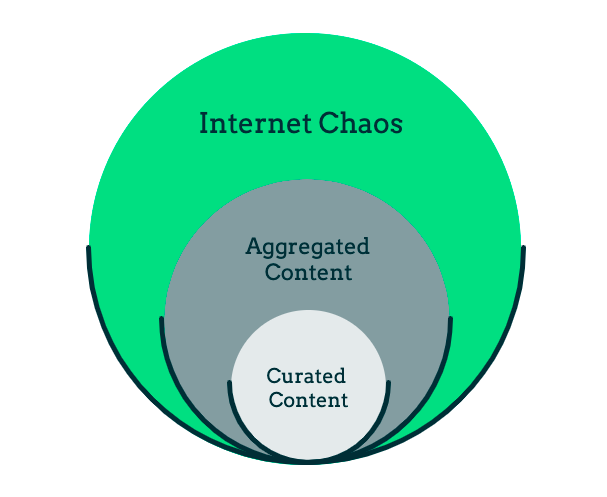 Current awareness is the result of content aggregation and content curation. What is the difference between these two, and how can they make a real difference to the content in your current awareness emails, feeds or dashboards?
Current awareness is the result of content aggregation and content curation. What is the difference between these two, and how can they make a real difference to the content in your current awareness emails, feeds or dashboards?
- Content aggregation is a process that brings together different types of digital content into one single searchable platform. Content can come in many formats - RSS, webpages, emails, PDFs etc. - so having it all in one place means that it can be searched and utilized effectively and efficiently.
- Content curation is for end-users who rely on handpicked and focused information. It can be described as the action of finding, choosing and presenting relevant content on a specific industry or subject matter. The end result (i.e. the relevant material) can then be used by a variety of professionals.
When information professionals are putting together a list of resources on an intranet page, creating training material, curating a “one stop” guide, supplying a list of email newsletters to which end-users can subscribe or even cleansing the library management system and removing out of date material from the collection - this is all about vetting - or critically curating - content.
We started out by asking what the difference was between content aggregation and content curation, but perhaps we need to turn that around and ask instead, what difference does it make to the organisation? Current awareness has long been a vital aspect of how an organisation maintains and develops its knowledge ecosystem and sets itself apart from the competition in the process.
What does current awareness let you do?
In brief, with a comprehensive current awareness system in place, you should be able to:
Become more efficient
The way information professionals deliver current awareness has undergone a quiet revolution in the past 30 years. Scanning newspapers and compiling clippings is now a thing of the past, but if you're still manually monitoring 100s of different websites on a daily basis, you should ask yourself why. Is there a way you could work smarter? You need to automate as much as possible, so what is stopping you?
Become the expert
Effective curation requires you to have an understanding of what your recipients need. Legal - and other - professionals need to be aware of developments in their practice areas. This includes industry news, regulatory and legislative developments, and they also need to know when competitors are in the news. They need all this to maintain and grow their expertise.
Gain a competitive edge
Law is a competitive industry and everyone has access to the same information. However, the right current awareness gives you the edge. Information professionals can tailor searches to produce results to fit everyone's needs. Stay ahead of the competition by being proactive, maintaining conversations, and predicting future trends - in this way your end-users can warn their clients about potential issues.
See an improved ROI
Maintaining library and information collections is expensive. By tracking how many of your end-users are opening their paid content and then clicking through to the links you will be able to see what sources are of direct relevance to your readers. If your end-users aren’t engaging with certain subscription content then there might be a better alternative available. Effective current awareness means you could see an increased return on investment (ROI) on your budget.
How do information professionals "do" current awareness?
‘Doing’ current awareness means communicating with people and working with them so that they receive the most relevant content. Your responsibility is to get the right information to the right person, at the right time, in the right way, and the right price. As an information professional, you know that to get the best current awareness alerts, you need to start with relevant and reliable sources.
Include paid-for database services where possible and if this isn't feasible, look at other sources to critically assess content quality and reliability. End-users think that they can 'just google something'. Of course, they are right - many useful services out there remain free and authoritative, especially if you have the expertise to judge it.
To complicate issues further, your end-users will have different needs to balance. For example, marketing and business development teams value a broader range of high level information. But a technical or compliance department would require a ‘less is more’ approach, with depth, accuracy, and detail.
What does "relevant" mean? Relevancy can mean finding a document in direct response to your search query, or finding related articles that are perhaps based on popularity or previous search history. In the future, relevancy will mean something completely different to a librarian, a casual shopper, or a patent attorney. Sites will become increasingly targeted in how they determine what types of documents are relevant to what types of user requests.
Being aware of such biases is a crucial aspect of directing the information flow, which is why you cannot replace a trusted human expert when it comes to quality current awareness. But often the best way to get that 'edge' in current awareness is by relying on technology and other people's expertise.
How is current awareness central to the success of your business?
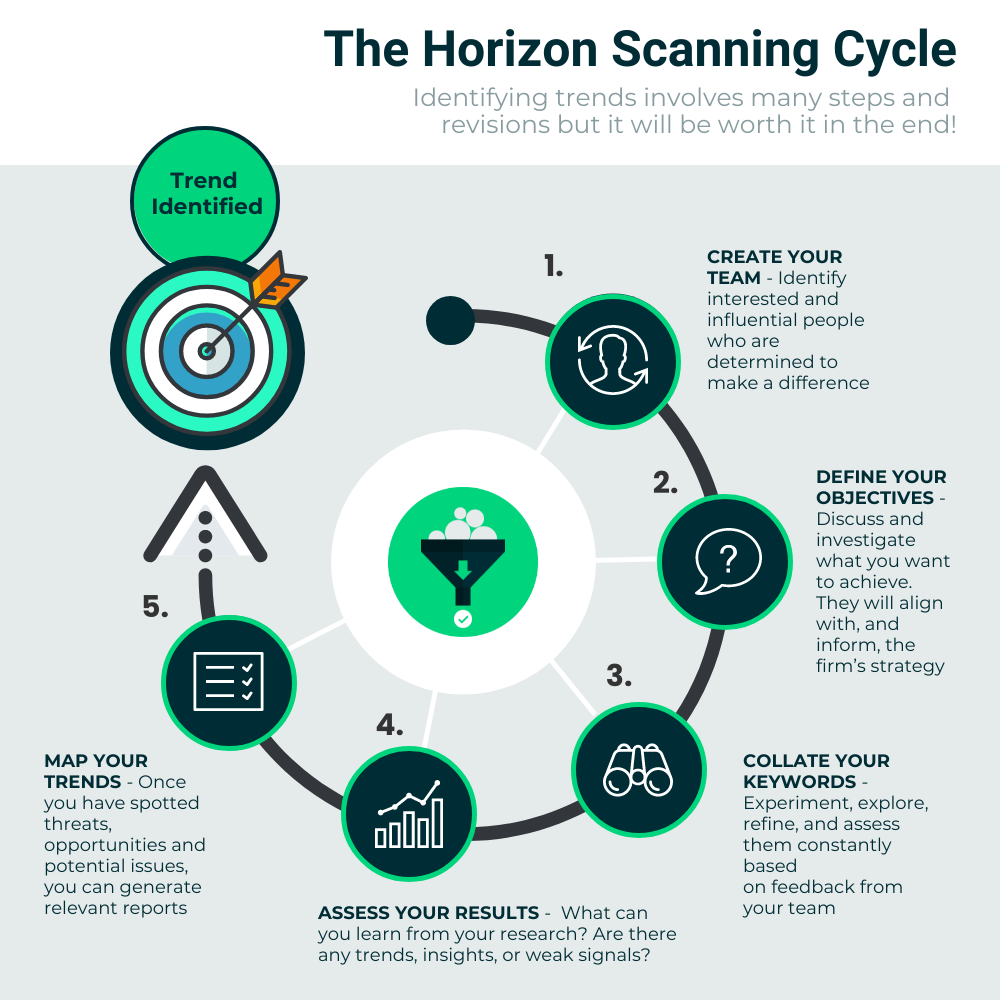
It is important to understand why current awareness is central to the success of your business. You need to understand how it can bring together different departments so that your end-users have everything they need to serve their clients as well as implementing solutions which streamline your existing processes.
Lack of communication between information and business development or marketing teams means you are potentially losing out on valuable opportunities. For instance, by collaborating on business development strategies, information people can be monitoring and producing “just before time” competitor analysis, spotting trends and keeping abreast of potential markets.
What is horizon scanning? It is about taking the long term view; going beyond tomorrow or next week and thinking more about the year to come. It focuses less on the day-to-day detail and enables you, more broadly, to pick up on trends, threats, and opportunities.
Business research skills are invaluable. You can advise on how to monitor your competitors to find out with whom they are talking, new developments, industry regulations, etc. You can leverage news and current awareness to build the brand, pitch expertise or even break into a new market. Your colleagues need to be aware of the opportunities available, not so you can follow the crowd, but potentially anticipate trends and be better prepared.
Clients are paying a premium for your organization’s expertise so it is not enough to provide a basic service. In today's competitive marketplace, you should be thinking about how your services can evolve and diversify - you should be thinking of ways to differentiate yourself from the competition. The information function can ensure the organisation is in a prime position to make the most out of the right opportunities. You are an integral part of its success so do not underestimate your importance.
Information people are excellent at assessing the needs of the organisation and clients so that everyone has the resources to work towards the same goals and outcomes.
How can we harness the power of the crowd?
Premium current awareness systems allow library and information people to add their own sources. In many cases, this content is publicly available and enhances the experience for other end-users.
This is called nichesourcing. It relies on collective expertise which is reflected in the quality of information added to crowdsourced current awareness platforms. Information professionals have considered the accuracy, neutrality, readability, relevance, and trustworthiness of new feeds.
As long as you are constantly evaluating the information added to the platform, standards will be maintained. However, for added reassurance, content aggregation platforms like Vable have safeguards in place. They can restrict access to certain sources if appropriate:
- Quality: If you are including unrestricted Google search RSS feeds, they may contain questionable or unreliable news items. As a way of countering this issue, a platform like Vable marks these feeds as private to your organization to ensure confidentiality and quality.
- Licences: Despite the collaborative nature of nichesourcing, if you need sources to be limited to particular end-users due to licence restrictions, content aggregators can restrict access to specific sources, or indeed, make them private to an organization
Most of the time, end-users are benefitting from the expertise of the information professional crowd. Given that new content is being added all the time, benefits include the discovery of new and relevant sources of information of use to colleagues; or you might find trustworthy free alternatives to expensive subscriptions.
How do I go about implementing a new current awareness platform?
Your information service needs a clear strategy which sets out the value which you are bringing to your audience. This is known as your value proposition. The idea is that your value is delivered in a simple, easily understandable manner so that your audience is able to see why they need you. Your library's value proposition here might include implementing a current awareness system.
We have listened to information people across various industries and we know that they face blockers in their organizations; this could be a lack of management interest, or a resourcing or knowledge issue. However in this new era, take the opportunity to challenge the status quo and ensure your firm is future-proofed.
- Project planning and management: The success of any project depends on authoritative leadership and a clear brief. Fact-finding is a vital part of the project - do your research and find out what is available. Ensure success criteria and establish timelines.
- System selection: Consider trialing a premium news aggregation system across a small diverse group of users, including business development and a key client. Your chosen supplier will work with you, offering professional support and advice, and providing a bespoke package to ensure your vision is realized.
- Outcomes: Ultimately you'll want to automate internal and external newsletters with easy and flexible self-service/dashboard access for all end-users. They might need to build their newsletters, request topics to be created, and also have the ability to share relevant information with clients and colleagues.
- Communications: Feedback and review can be channelled via the project manager to assess success, and potential ROI, and oversee engagement in the project generating interest in a wider roll-out.
Implementing a successful current awareness platform isn’t about the latest must-have technology. It’s the purposeful, deliberate, and intentional desire to build capabilities outside the classic approach to the practice of law. Managing partners can’t afford not to future-proof the organisation, because the future has already happened!
Vable suggests:
- - Find 5 simple elements to include when creating a strategy for innovation success
- - Have you considered how you are going to organize your current awareness?
- - Before embarking on your project, what are your success criteria?
- - Failure is not an option. Consider how you can ensure the success of your project
Making a business case for a current awareness solution
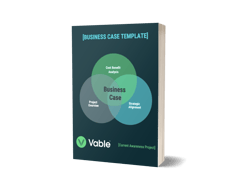
Business cases provide the real detail behind your library and information strategy. As such, they are probably the hardest document to write because you are directly targeting your organisation’s senior business and finance teams. Making a case for new resources is a challenge because your organization’s senior business and finance teams want to know how such an investment will benefit the organisation.
Business planning and business cases require written preparation and a substantial investment of time by the library and information manager. The team at Vable appreciate that you might welcome assistance with this initial process. The document we have put together has been created with a full Vable implementation in mind. It includes a project overview, who is taking responsibility for what, how the project will strategically align with your organization, as well as a Cost Benefit Analysis.
How can current awareness save your information service money
You might wonder how a current awareness platform could save your organization money. For a start, it can track email opens and click-throughs on article links, allowing you to see what is being used heavily - or not - so you can gauge the value of subscriptions. A content aggregator can make sure that you are spending your budget on the right content.
Sometimes, lawyers, academics, healthcare professionals and so on, might insist that a particular expensive publication is essential for their work. However, usage statistics could tell a different story - if you're creating emails with content from premium publishers for people who simply aren’t opening them, these subscriptions might be an area of unnecessary expenditure.
We appreciate that most publishers provide usage statistics for their content but often these can vary in format from one publisher to the next, making it difficult to compare usage across the board. It can be a challenge to manipulate usage data and form it into a single, coherent report for management. Without this vital information, there is no way to be sure you can justify every expense at budget renewal time.
How can current awareness raise your profile?
Newsletters and alerts generated by current awareness systems ensure that your library and information service branding is automatically presented every time you send an email. Even fully automated alerts are specific to your presentation requirements. We recognise its importance because it is one of the first questions the Vable team will ask you when you sign up for a free trial, “what branding do you want your newsletters to contain?”
One library and information professional explains the importance of branding, "alerts are branded and sent out from the library, so we regularly appear in the lawyers’ inboxes". These alerts drive engagement because they sometimes reply to the alert asking for something similar to be set up - on a slightly different topic or geographic scope.
You should always brand your product and services. The alert you are sending to internal or external users is not just about adding colors and a logo. You are delivering aggregated content originally created by third-party publishers, but you are making it your own by expert annotation, editing and content selection - let people know that you evaluated the content, made selections, and are monitoring it to build trust in your efficient and effective delivery.
Are current awareness platforms content agnostic? What about entrepreneurs and others?
Current awareness is standard in most professional services organizations such as law firms. However, it is interesting to find out what people in other sectors and industries know about it. Roberto Rivero is an angel investor and was excited to discover what current awareness and content aggregation could do for him in his line of work. He says,
"Professionally, we all have topics that we have to stay up to date on. In my last job, at S&P, that included changes in investor appetite and news of large corporations raising funds in the capital markets, or re-organising their operations and any changes in relevant regulations.
Current awareness is a concept I’ve learned about relatively recently that I think should be a lot more widespread than it currently is. It is a practice that is used extensively in large legal firms, big pharma and some academic institutions.
I have always been a big believer in the benefits of cross-pollinating ideas – of picking up concepts and techniques from one field, then adapting and implementing them in another. Doing what to me seems like something obvious and easy, has led to me being called “entrepreneurial” and “innovative” many times in my career".
Are there any current awareness implementation case studies?
Watson, Farley & Williams chose Vable to help their Information and Research team to become more efficient, flexible, and have consistent branding. Their new professional-looking newsletters are delivering targeted, valuable and timely headlines, from all relevant free and premium sources. Vable has transformed the way they work, and they have been able to rapidly expand and enhance their firm’s current awareness capability.
Reed Smith is currently migrating from heritage current awareness system Linex to the second generation platform Vable. They say that “current awareness is a category that we record in our Research Statistics and it has the highest incidence of requests. This could range from setting up new alerts, curating manual alerts, tweaking searches or adding people to distribution lists.” The new bespoke Reed Smith newsletter and alert templates are designed to be as readable and eye-catching as possible. It is important that communications from the library service are professionally branded.
Williams Mullen’s Library Team was looking to simplify the process for routing electronic current awareness resources, but they also wanted to incorporate feeds for individual attorneys and practice groups into portal pages. The firm has further plans for Vable, for instance, they are adding Marketing’s client alerts into each attorney’s newsletter and hope to incorporate client alert feeds into personal portal pages for each attorney or practice group.
And finally, let's be sociable!
Follow Vable's Current Awareness Strategy Blog for ideas, inspiration, webinar notes and best practice. You can also find us on social media on Twitter, YouTube and LinkedIn - come talk to us!
Contributors:
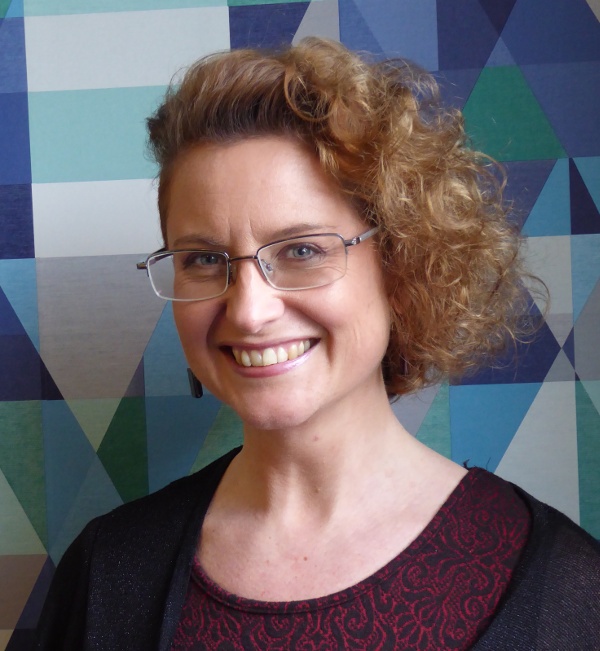
Clare Bilobrk
Topic Specialist
Vable Insights
Keep up to date with our latest blog posts
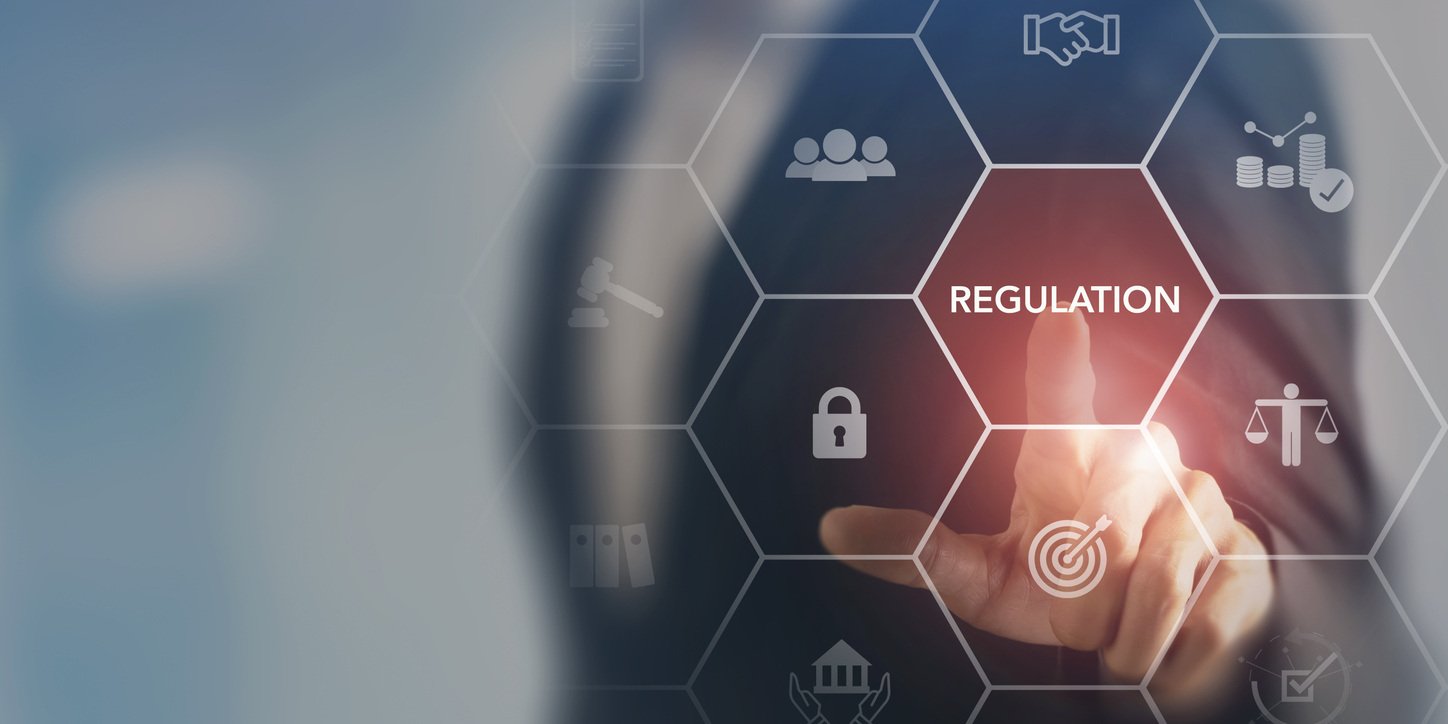
Clarity is the new currency: why legal tech must deliver measurable outcomes with transparent intelligence

Breaking Free: how legal technology solutions tackle administrative overload in change-resistant law firms
